
A church building or church house, often simply called a church, is a building used for Christian religious activities, particularly for Christian worship services. The term is often used by Christians to refer to the physical buildings where they worship, but it is sometimes used to refer to buildings of other religions. In traditional Christian architecture, the church is often arranged in the shape of a Christian cross. When viewed from plan view the longest part of a cross is represented by the aisle and the junction of the cross is located at the altar area.

In architecture, a gargoyle is a carved or formed grotesque with a spout designed to convey water from a roof and away from the side of a building, thereby preventing rainwater from running down masonry walls and eroding the mortar between. Architects often used multiple gargoyles on a building to divide the flow of rainwater off the roof to minimize the potential damage from a rainstorm. A trough is cut in the back of the gargoyle and rainwater typically exits through the open mouth. Gargoyles are usually an elongated fantastical animal because the length of the gargoyle determines how far water is directed from the wall. When Gothic flying buttresses were used, aqueducts were sometimes cut into the buttress to divert water over the aisle walls.

Cologne Cathedral is a Catholic cathedral in Cologne, North Rhine-Westphalia, Germany. It is the seat of the Archbishop of Cologne and of the administration of the Archdiocese of Cologne. It is a renowned monument of German Catholicism and Gothic architecture and was declared a World Heritage Site in 1996. It is Germany's most visited landmark, attracting an average of 20,000 people a day, and currently the tallest twin-spired church at 157 m (515 ft) tall.

Gothic Revival is an architectural movement popular in the Western world that began in the late 1740s in England. Its popularity grew rapidly in the early 19th century, when increasingly serious and learned admirers of neo-Gothic styles sought to revive medieval Gothic architecture, in contrast to the neoclassical styles prevalent at the time. Gothic Revival draws features from the original Gothic style, including decorative patterns, finials, lancet windows, hood moulds and label stops.

Sebastião Ribeiro Salgado Júnior is a Brazilian social documentary photographer and photojournalist.

Victorian architecture is a series of architectural revival styles in the mid-to-late 19th century. Victorian refers to the reign of Queen Victoria (1837–1901), called the Victorian era, during which period the styles known as Victorian were used in construction. However, many elements of what is typically termed "Victorian" architecture did not become popular until later in Victoria's reign. The styles often included interpretations and eclectic revivals of historic styles. The name represents the British and French custom of naming architectural styles for a reigning monarch. Within this naming and classification scheme, it followed Georgian architecture and later Regency architecture, and was succeeded by Edwardian architecture.
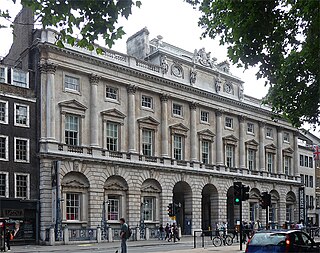
The Courtauld Institute of Art, commonly referred to as The Courtauld, is a self-governing college of the University of London specialising in the study of the history of art and conservation. It is among the most prestigious institutions in the world for these disciplines and is widely known for the disproportionate number of directors of major museums drawn from its small body of alumni.

American Gothic is a 1930 painting by Grant Wood in the collection of the Art Institute of Chicago. Wood was inspired to paint what is now known as the American Gothic House in Eldon, Iowa, along with "the kind of people I fancied should live in that house." It depicts a farmer standing beside a woman who has been interpreted to be his sister.

New College in The University of Edinburgh is one of the largest and most renowned centres for (post)graduate studies in Theology and Religious Studies in the UK, with students in M.A., M.Th. and Ph.D. degree programmes coming from over 30 countries. There are now nearly 40 full-time members of the academic staff, and they include internationally respected scholars in various specialities.
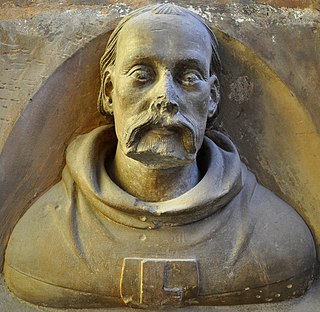
Peter Parler was a German-Bohemian architect and sculptor from the Parler family of master builders. Along with his father, Heinrich Parler, he is one of the most prominent and influential craftsmen of the Middle Ages. Born and apprenticed in the town of Schwäbisch Gmünd, Peter worked at several important late Medieval building sites, including Strasbourg, Cologne, and Nuremberg. After 1356 he lived in Prague, capital of the Kingdom of Bohemia and seat of the Holy Roman Empire, where he created his most famous works: St. Vitus Cathedral and the Charles Bridge.

Raygun Gothic is a catchall term for a visual style that incorporates various aspects of the Googie, Streamline Moderne and Art Deco architectural styles when applied to retrofuturistic science fiction environments. Academic Lance Olsen has characterised Raygun Gothic as "a tomorrow that never was".
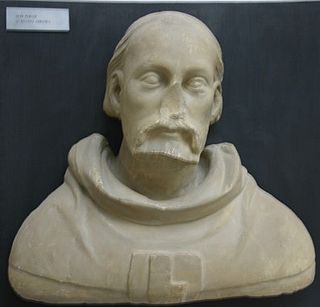
Parler was a surname of a family of German architects and sculptors from the 14th century. Founder of the dynasty, Heinrich Parler, came from Cologne, but later lived and worked in Gmünd. His descendants were working in various parts of central Europe, especially in Bohemia. The family name was derived from the word Parlier, meaning "foreman".
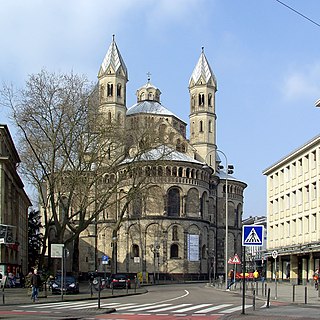
The Basilica of the Holy Apostles ) is a Romanesque church in Cologne (Köln), located near Innenstadt's busy Neumarkt. The former collegiate church is dedicated to the twelve Apostles. It is one of the twelve Romanesque churches built in Cologne in that period.
Robert Tavernor is an English Emeritus Professor of Architecture and Urban Design at the London School of Economics and Political Science (LSE), and founding director of the Tavernor Consultancy in London. He is an architecture historian and urbanist, who has published widely on architecture and urban design, including the impact of tall buildings on historic cities. He has a long academic career, having been appointed to the Forbes Chair in Architecture at the University of Edinburgh at age 36.
John Shannon Hendrix is an architectural historian and philosopher who has written and lectured extensively on the subjects of architecture, art, philosophy, aesthetics, psychoanalysis, science, culture and history. Much of his work focuses on connections among those topics, such as interactions of vision, perception, and sensation with the arts and architecture, the relationships between psychoanalysis and architecture, physical sciences and architecture, and philosophy and architecture. His career focuses on research and writing about "mostly European precedents in architecture and philosophy, for the purpose of suggesting alternatives to the practice of architecture and philosophy at the beginning of the twenty-first century."
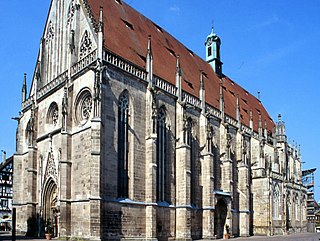
Heinrich Parler the Elder, was a German architect and sculptor. His masterpiece is Holy Cross Minster, an influential milestone of late Gothic architecture in the town of Schwäbisch Gmünd, Baden-Württemberg, Germany. Parler also founded the Parler family of master builders and his descendants worked in various parts of central Europe, especially Bohemia. His son, Peter Parler, became one of the major architects of the Middle Ages. The family name is derived from the word Parlier, meaning "foreman".

The Altenberger Dom is the former abbey church of Altenberg Abbey which was built from 1259 in Gothic style by Cistercians. Listed as a cultural heritage, it is located in Altenberg, now part of Odenthal in the Rheinisch-Bergischer Kreis, North Rhine-Westphalia, Germany. Until 1511, the church was the burial site of counts and dukes of Berg and the dukes of Jülich-Berg.

Branchwork or branch tracery is a type of architectural ornament often used in late Gothic architecture and the Northern Renaissance, consisting of knobbly, intertwined and leafless branches. Branchwork was particularly widespread in Central European art between 1480 and 1520 and can be found in all media. The intellectual origin of branchwork lies in theories in Renaissance humanism about the origins of architecture in natural forms and barely-treated natural materials.



















